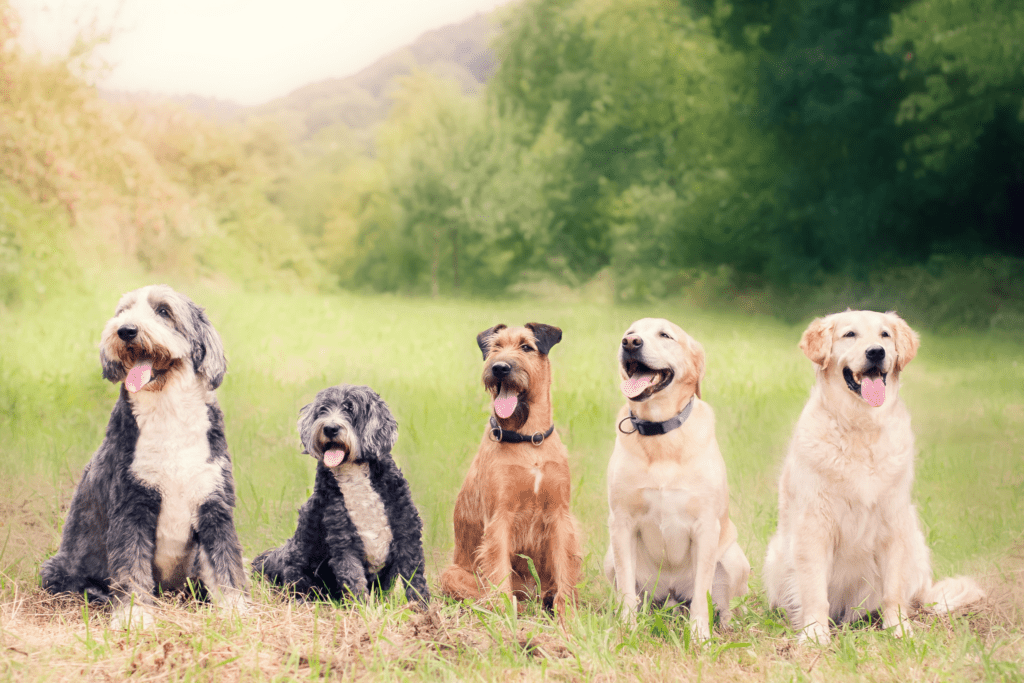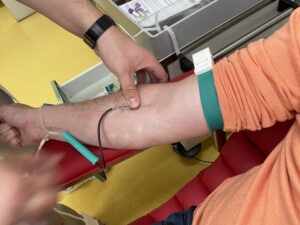
According to the National Center for Health Research, our pets play an important role in our lives. Not only do they provide companionship, but they are also good for our health. We use our furry pals as seeing-eye dogs, to detect seizures, and as assistants in physical rehabilitation. In fact, research studies have revealed that people with pets have healthier hearts, are less depressed, don’t get sick often, and make fewer visits to the doctor.
While we reap a lot of benefits from bringing a pet into our lives, you still have to think about the costs of pet care, most especially vet bills. Before you choose a pet to bring home, consider pet health costs and which type of dogs are least likely to rack up hefty veterinary bills as well. In this post, let’s take a closer look at the dog breeds with the most and least health issues.
10 Dog Breeds with the Most Health Problems
Purebred dogs are certainly in demand, but some of these poor pups have health issues that stem from years of breeding with specific personalities and physical features in mind. In breeding, there is an issue called popular sire syndrome wherein a stud is used to breed, spreading his genes quickly.
But there are a couple of problems with this. First, unhealthy genes which the stud carries can quickly increase and possibly create new breed-specific disorders. Second, overuse of the sire narrows the diversity of the gene pool. This controlled breeding has aggravated breed-related health issues. Without further ado, here are the dog breeds that have the most health issues:
Miniature Poodle
This breed lives long and often happy lives, but they’re prone to certain health conditions such as Addison’s Disease (hypoadrenocorticism) caused by insufficient production of adrenal hormones. They can also get affected by Cushing’s Disease (hyperadrenocorticism) which occurs when your pet’s body produces too much cortisol. Miniature Poodles are also prone to Progressive Retinal Atrophy, which involves the deterioration of the retina, and as the disease worsens, your dog can lose sight during the day.
Newfoundland
This breed has a life expectancy of 9 years and is prone to canine hip dysplasia (CHD). This heritable condition results from the hip ball and socket rubbing and grinding against each other instead of sliding smoothly. Sadly, genetics is the primary reason large breeds are mostly affected by this disease. Other factors that lead to this disorder include obesity, lack of exercise, and poor nutrition. Subvalvular aortic stenosis, a heart condition that leads to fainting and sudden death, may also affect Newfoundlands.
Rottweiler
Another large breed that’s prone to canine hip dysplasia is the Rottweiler. Since it’s a hereditary condition, pet parents should always buy from reputable breeders, as they usually test the pup’s parents for health problems such as CHD. Osteosarcoma, an aggressive bone cancer, may also affect large breeds like Rotties. Pets suffering from this disease usually need amputation and chemotherapy.
Labrador Retriever
This friendly and lovable breed is ranked number one on AKC’s popularity list. However, fur parents of labs usually discover that their poor furkids are also susceptible to canine hip dysplasia. Your veterinarian will most likely recommend supplements for hip pain relief. Looking for high-quality and natural supplements to prevent CHD? Pawstruck Natural Hip and Joint Supplements are packed with ingredients such as glucosamine, chondroitin, and turmeric that help reduce inflammation.
Basset Hound
This stubborn but very affectionate hound requires a committed owner who can attend to their needs, especially if they have health issues. Basset Hounds are prone to flatulence, which needs to be addressed by a vet if it happens often. A change in diet may help your poor pup. Because Bassets tend to overeat, they can also put on too much weight which leads to joint problems. You also need to check and clean their long ears as ear infection is another health concern that you need to look out for.
Saint Bernard
This giant breed used to guard the grounds of St. Bernard Hospice in Switzerland, but now they’re mostly companion dogs who are devoted to their humans. Because of their size, they only have a life expectancy of 9 years and will most likely suffer from elbow dysplasia and canine hip dysplasia. Saints suffer from heat exhaustion easily. It’s important to provide shade and fresh water to prevent heat stroke.
Golden Retriever
If your Golden Retriever licks themselves often, chances are they are suffering from skin allergies. When dogs have allergies, they’ll usually lick a certain spot frequently, and will even chew and scratch that area until the skin becomes red and inflamed. Aside from skin allergies, Goldens are also prone to CHD and elbow dysplasia, Cataracts, and Von Willebrand’s Disease (an inherited blood disorder that leads to bleeding in gums, stomach, and intestines).
Bulldog
Dogs with short-muzzled heads like the adorable Bulldogs are most likely to suffer from respiratory ailments. They snore a lot because of their elongated soft palate, small nostrils, and narrow trachea. Bulldogs are prone to overheating, a major reason they’re indoors most of the time. But they’re also sensitive to cold weather. On top of those, female Bulldogs have a hard time giving birth and require a c-section to deliver. That’s not necessarily a health issue, but it’s important to know, as this is also added to your vet bills.
German Shepherd
Another large dog that’s prone to canine hip dysplasia is the highly versatile German Shepherd. CHD can exist in a dog without clinical signs. Some dogs experience pain and exhibit lameness on one or two of their rear legs. Degenerative myelopathy, a progressive disease of the spinal cord, usually afflicts GSDs. Dogs with DM can’t move properly and will eventually reach a point where they can no longer walk.
Cocker Spaniel
The sweet cockers are generally healthy, but they’re also prone to diseases such as autoimmune hemolytic anemia (AIHA), a condition in dogs wherein their immune system attacks its own blood cells. Another disorder that you need to look out for in Cockers is primary seborrhea, a skin problem that results from the overproduction of skin cells and sebaceous cells. Food, contact, and inhalant allergies are also common among Cockers.
10 Dog Breeds with the Least Health Problems
As fur parents, we all want our fur babies to live long, happy lives. Unfortunately, our dogs have incredibly short life spans compared to us. We just do our best to make sure that they’re healthy and contented. As mentioned above, each breed has their health concerns, but some of these doggos are at a lower risk for genetic diseases and ailments.
Australian Cattle Dog
This breed is known to live long, with no major ailments. In fact, the oldest living dog was Bluey, an Australian Cattle Dog, who lived until he was 29 and a half years old. Another Australian Cattle Dog that lived long was 32-year-old Chilla from Queensland, Australia. Unfortunately, Chilla wasn’t able to claim that title from the Guinness Book of World Records.
Border Collie
Another breed that’s known for their good health is the highly intelligent Border Collie. What makes them live long and healthy is their need to move. Because of that need, they require plenty of exercise, which keeps them mentally stimulated and reduces the risk of obesity and other ailments. This breed is definitely not a couch potato, and most of the time, we refer to them as workaholics. What can we say? Border Collies are happiest (and healthiest!) when they have work.
Siberian Husky
This breed may not be for everyone, but Siberian Huskies are one of the best dogs to care for. With the right owner, they can live up to 14 years, maybe even longer. The oldest husky reportedly lived until 18 years of age. Despite their size, they also don’t eat that much simply because they were bred that way. Every meal you give to your husky should meet their requirements to stay healthy and fit. Exercise is also a must for this high-energy pup or the entire neighborhood is going to hear them howl.
Beagle
Stubborn is an understatement for this hardy breed. They may be hard to train, but they’re also one of the best dogs to own. With the right food, environment, and plenty of exercise, your beagle can live up to 15 years and become your ever-loyal companion. Speaking of food, Beagles will eat absolutely anything, even if they’re full. Monitor the amount of food you give them. For treats, they would be happy gnawing on a low-calorie chew treat like Pawstruck Cow Ears.
Australian Shepherd
The exuberant Australian Shepherd can live up to 15 years, especially if you give them 30 to 60 minutes of vigorous exercise daily. Aussie owners should also give them work to do every day, as they’re happiest when they have a job to do. Australian Shepherds are prone to certain health concerns, but when you’re buying from a breeder, ask for health clearances from the pup’s parents.
Basenjis
The “barkless” African dog is known for their cleanliness. I guess you can say that this breed can teach humans a thing or two about cleaning our homes. Aside from licking their fur clean like cats do, they also shed very little. Although they’re prone to some health issues such as Fanconi syndrome and malabsorption, these conditions are rare and you should be able to check with the breeder which dogs in their bloodline have these conditions. With the right food and adequate exercise, your Basenji can live up to 12 years.
Belgian Malinois
Although Malinois are heavy shedders and unfit for novice owners, they’re a highly recommended breed you would want to adopt or buy from a reputable breeder. They’re highly intelligent and affectionate with family members. Malinois are known to have good health and aren’t prone to major diseases. They rarely have heart conditions and aren’t prone to liver and kidney disease. This breed can live up to 14 years if cared for properly.
Greyhound
Known as the Ferrari of the dog world, a Greyhound can reach speeds of up to 45 miles per hour. Their high energy means they need plenty of exercise. But don’t let that put you off. They’re also fine with snoozing on your couch. As long as you take them out for daily walks and provide nutritious meals for this loving doggo, they’re perfectly happy, healthy, and can live up to 15 years. However, you should know that this breed is highly sensitive and cannot thrive in a home that has people arguing all the time. They literally can get sick to their stomachs with severe digestive issues.
Miniature Schnauzer
This extroverted small dog is intelligent and makes a wonderful companion for a human who never wants to be alone. They’ll even follow you to the bathroom! These people dogs can be the sunshine in your life as long as they have adequate exercise and high-quality meals. Miniature Schnauzers are also prone to some health issues such as pancreatitis, but you can take preventive measures to stop them from affecting your pup.
Mixed Breed Dogs
So, is it true that mixed-breed dogs are healthier compared to purebreds? Yes, they are! Dr. Linda Simon, a veterinary surgeon, says, “This is because their genetic pool is wider and they are less prone to hereditary health issues such as hip dysplasia, progressive retinal atrophy, or congenital deafness.” According to a study conducted on 27,254 dogs, 42% of genetic conditions were higher in purebred dogs. Snobs may turn up their noses at these mutts, but these mixed breeds’ precious ones are still worth caring for.





















